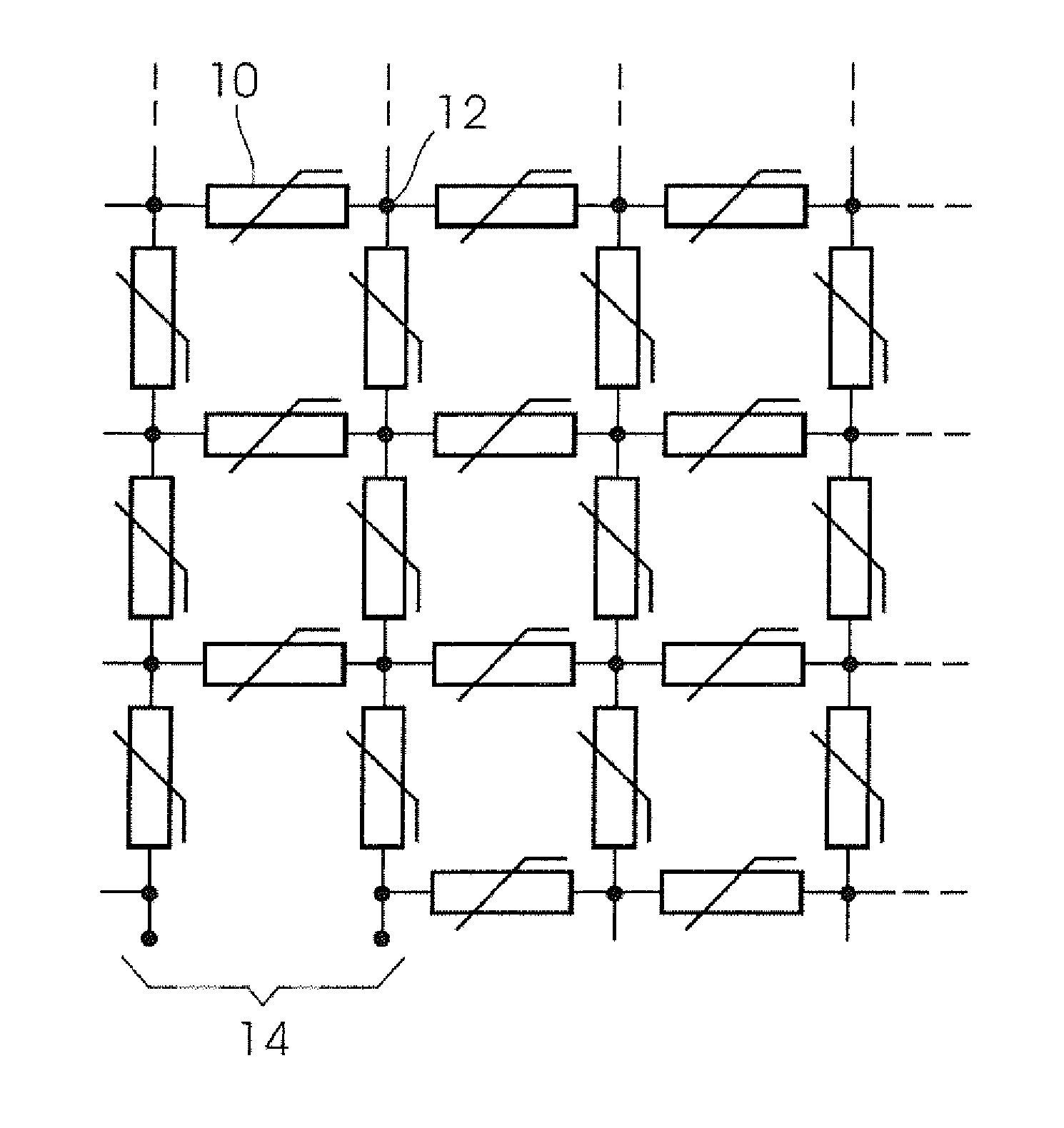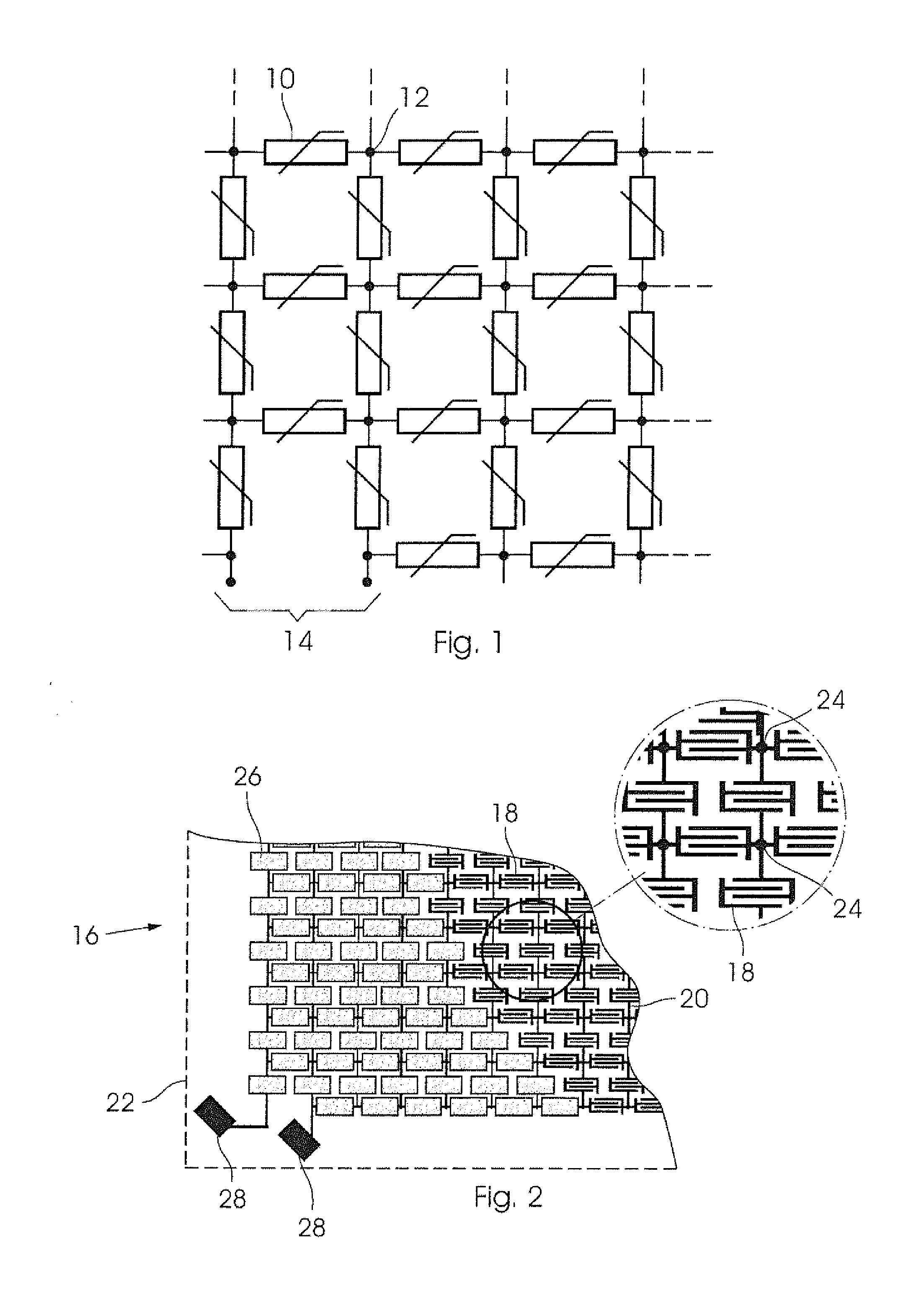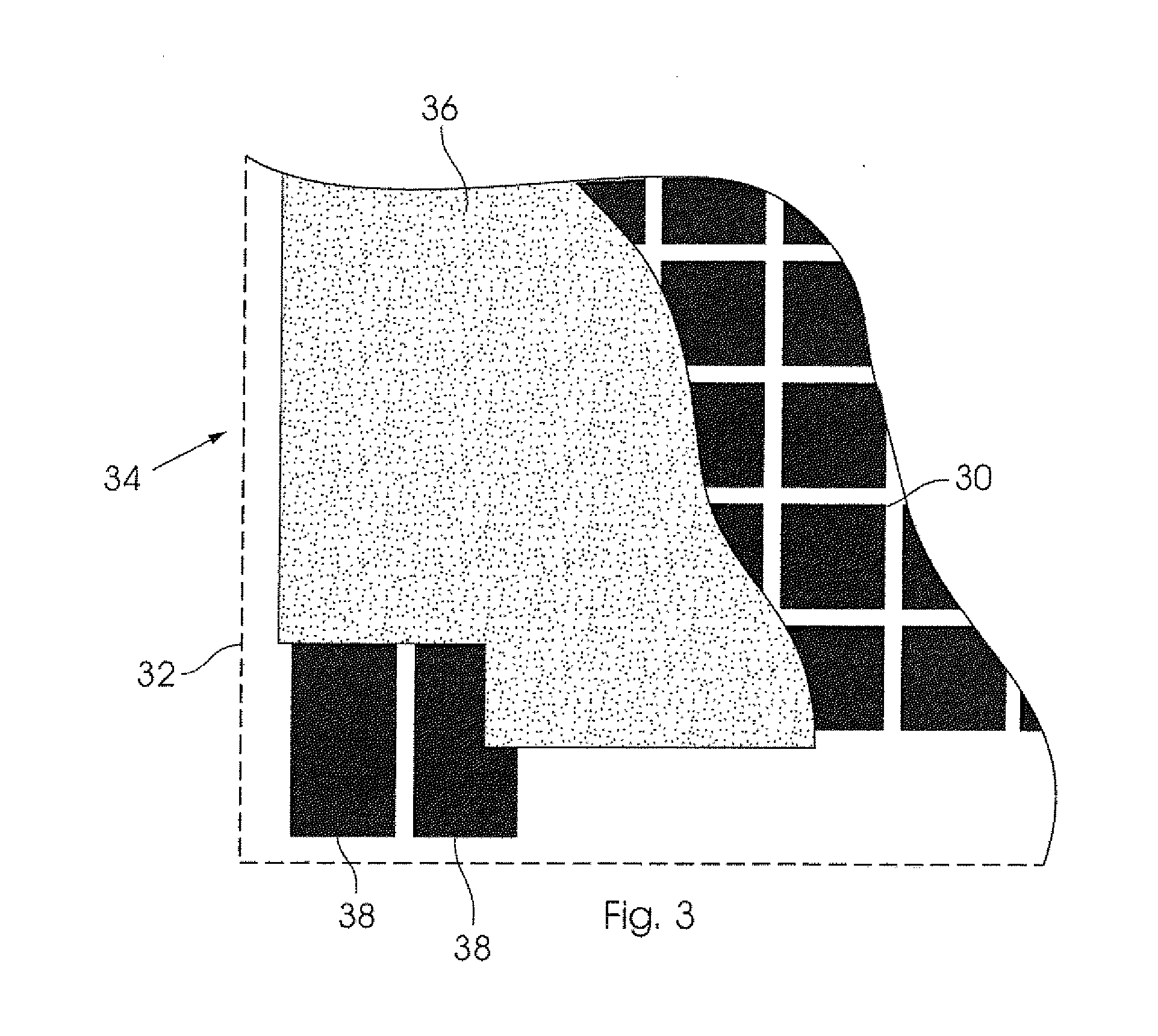Large Area Temperature Sensor
- Summary
- Abstract
- Description
- Claims
- Application Information
AI Technical Summary
Benefits of technology
Problems solved by technology
Method used
Image
Examples
Embodiment Construction
[0021]The present invention relates to temperature sensing devices and a method of producing such devices. In particular, the devices may be large area negative temperature coefficient thermistors, produced by printing techniques on thin substrates, which may be cut to size without affecting the characteristics of the device. Of particular relevance here are thermistors which have a negative temperature coefficient of resistance, commonly known as NTC thermistors, meaning that their electrical resistance decreases approximately exponentially with increasing temperature.
[0022]The present invention therefore concerns the use of thermistors, specifically printed negative temperature coefficient (NTC) thermistors, which can be applied as single large area sensor to determine an average temperature or as a temperature sensing array as described in our co-pending provisional patent application Thermal Imaging Sensor, filed on 30 Jan. 2012, where the sensors may be individually addressed o...
PUM
| Property | Measurement | Unit |
|---|---|---|
| temperature | aaaaa | aaaaa |
| average resistance | aaaaa | aaaaa |
| resistance | aaaaa | aaaaa |
Abstract
Description
Claims
Application Information
 Login to View More
Login to View More - R&D
- Intellectual Property
- Life Sciences
- Materials
- Tech Scout
- Unparalleled Data Quality
- Higher Quality Content
- 60% Fewer Hallucinations
Browse by: Latest US Patents, China's latest patents, Technical Efficacy Thesaurus, Application Domain, Technology Topic, Popular Technical Reports.
© 2025 PatSnap. All rights reserved.Legal|Privacy policy|Modern Slavery Act Transparency Statement|Sitemap|About US| Contact US: help@patsnap.com



